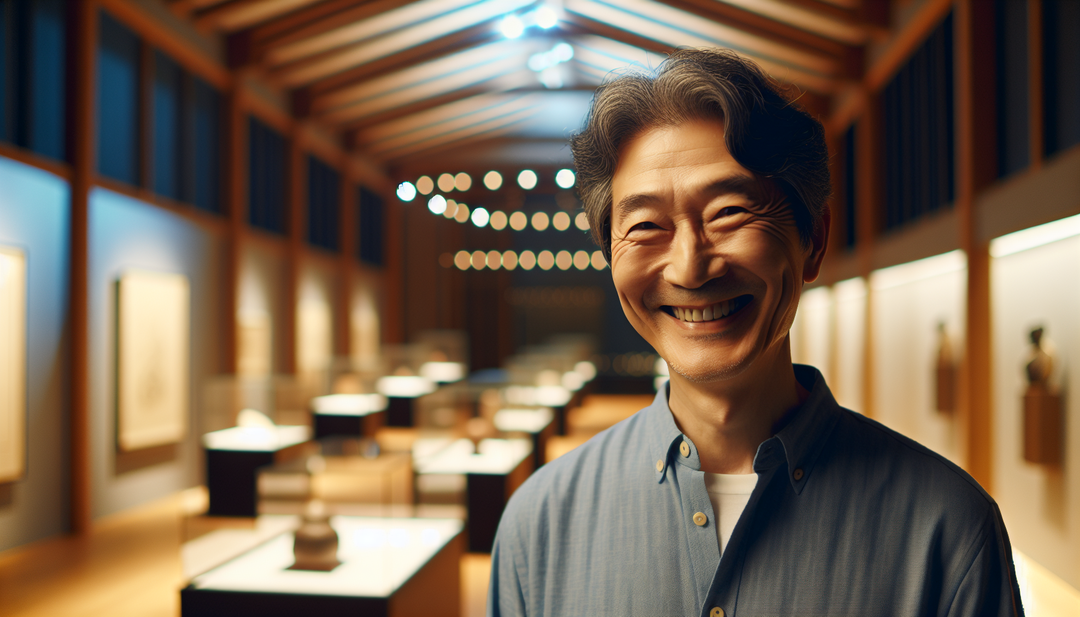
Utilizing the lighting design proposal from the LumiSpace sales team, the curator proceeded with the museum's renovation project, completing the sensory transformation of the exhibition space by adjusting the illuminance and color temperature. Standing in the museum's quiet lobby, the curator, who had replaced the lighting two years ago, scrutinized the uncomfortable glances.
These lights cast sharp light, casting heavy shadows over precious exhibits.
The curator straightened the wrinkles on his forehead and tilted his head. Today, his task was to decide on a new lighting design proposal.
"This brightness is not good for the exhibits..." he muttered to himself as he looked around the exhibition hall. He had a dream in his mind of conceiving the perfect lighting to make the museum stand out even more.
Now was the time to realize that dream.
The curator strolled, imagining how each exhibit would be illuminated. He was not a lighting design expert, but he knew what was needed and had to find a way to make it a reality.
His thoughts turned to the 'LumiSpace sales team' he had met a few days ago.
The museum's large-scale renovation project has received significant attention in the industry. The curator received interior design proposals from various design companies for this project.
Each company submitted its design drawings, incorporating lighting that could be seen in existing online shops. However, there was no specific presentation of the expression method, illuminance, reflectance, or color temperature, which were not explicitly presented.
This caused the curator a great deal of concern.
The curator believed that the museum's lighting was essential beyond simply illuminating the exhibits, creating a connection between the exhibits and the visitors.
And the proposed drawings did not meet this vision of his. In this situation, the proposal from LumiSpace was placed on his desk.
The design team at LumiSpace thoroughly analyzed the museum's existing lighting design and addressed all the details that the curator was curious about. They presented a clear plan on how to set the brightness, color temperature, reflection values, angles, etc., taking into account the characteristics of each exhibition space.
In addition, it detailed the artistic expression of methods for representing the direction and diffusion of light, the formation of shadows, etc. through simulation.
The curator marveled as he read the proposal from LumiSpace. The detailed description in the design document, specifying 'lighting from 1 to 10,' far exceeded his expectations.
LumiSpace not only considered the functional aspects, but also delved deeply into how the lighting could blend with the exhibition space and evoke emotional responses.
After finishing the meeting with the LumiSpace sales team, the curator sat quietly on the lobby sofa.
The curator decided to work with Lumispace without further hesitation.
He was convinced that their proposal was the key to modern and sensuous transformation of the museum's new exhibition space.
The project soon commenced, and as the renovation work began, the museum gradually began to take on the appearance he had dreamed of.
Can the lighting system really meet everyone's expectations?
Two months later, the installation of new lighting fixtures began.
whileThe museum temporarily closed as experts busily installed customized lighting in each exhibition room. The curator meticulously monitored the progress every day.
His heart was filled with excitement and tension.
Finally, all the installations were completed, and the reopening day of the museum arrived. The curator prepared to cut the ribbon with a nervous heart at the reopening ceremony.
Amidst a gathering of spectators and journalists, he took a deep breath, cut the ribbon, and opened the door.
As guests entered the museum, each exhibit shone vividly under the new lighting. Ancient sculptures radiated softly, while modern artworks exuded their true essence under each respective lighting.
The audience's faces were filled with expressions of admiration, and camera flashes kept going off.
Art critics and historians also praised the curator's courage and innovative approach. "Amazingly, the museum can be reborn like this," said one critic.
The curator felt the tension release only after hearing those words.
That evening, the museum concluded with a celebratory dinner to mark the successful remodeling.
The curator expressed gratitude for everyone's hard work through a toast, saying, "By illuminating the past, we are moving towards the future. Today's gathering is evidence of that."
In that moment, gazing at the exhibits shining even brighter under the museum's new lighting, the curator was reassured that his choice was right.
He was pleased with the day's success, believing the museum would continue establishing itself as a living educational center for culture and history.
